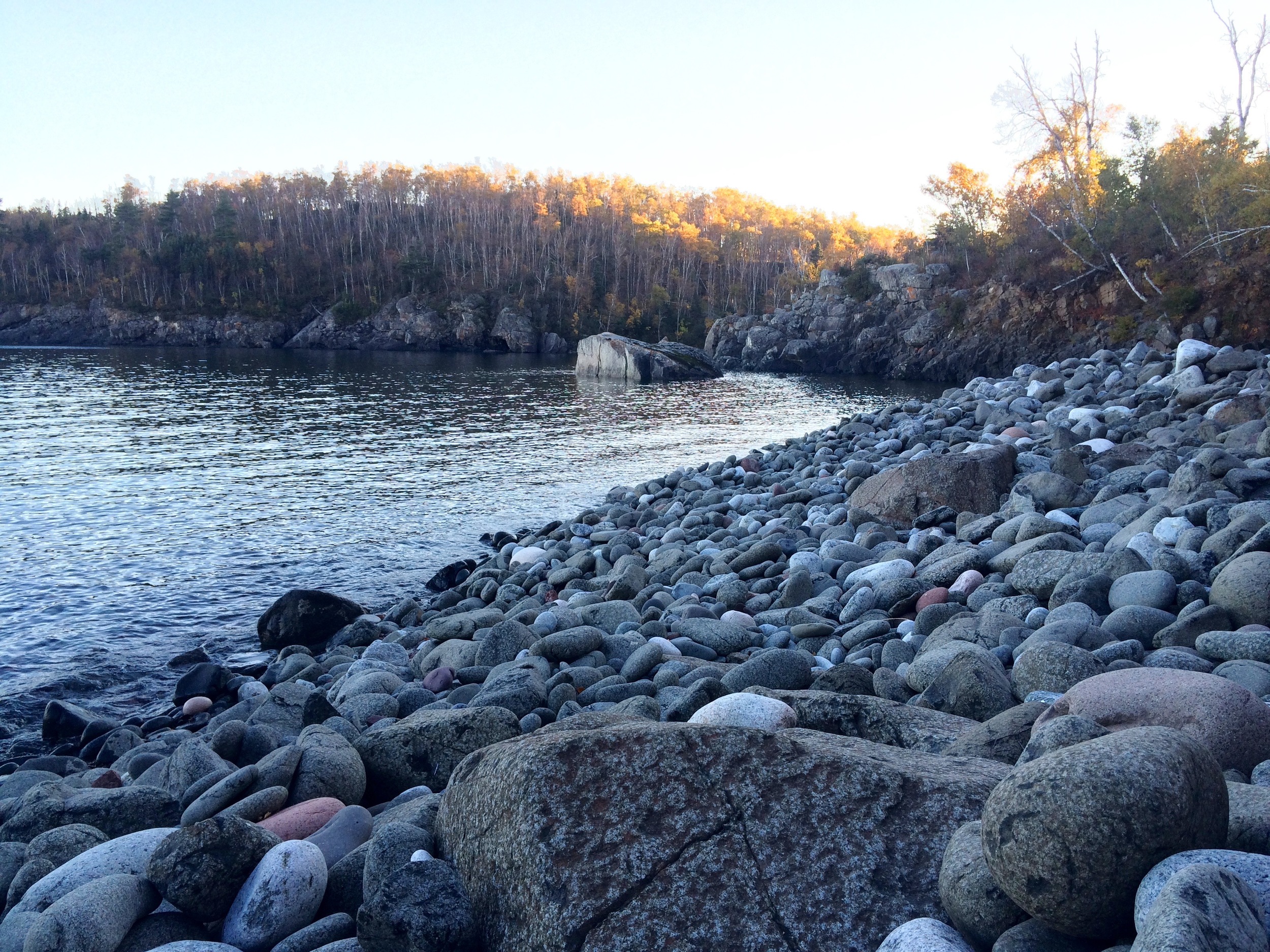Highlights:
-Backcountry Hikes
-Waterfalls
-Stellar Lakeside Hikes
-Brand New Visitor Center
The view from the top of High Falls at Tettegouche State Park
The Park
If the Minnesota State Park system had a flagship park, it would be Tettegouche. This 9,500 acre park along the Baptism River boasts 23 miles of trails including a section of the Superior Hiking Trail (SHT), three waterfalls, and a spectacular shoreline along Lake Superior. An easy hike is to High Falls, cascading 60 ft over the basalt cliffs. Inland lakes offer prime trout fishings and the high cliffs along the trail to Shovel Point is one of the most popular climbing locations along the shore. And if you need a break from your outdoor adventures, the visitor center features a massive central fireplace and comfortable seating to hang out and relax. The only drawback is that the campsites, which are still great, are not situated right along the lake like Split Rock or Temperance. Nevertheless, this park truly has something for everyone and is a must visit.
The cliffs at Shovel Point in Tettegouche State Park
The Hike
Begin your 2-mile hike behind the visitor's center following the signs for the Hiking Club trail or Shovel Point. The trail heads east along shore with several overlooks along the way. These cliffs are a favorite place for rock climbers and hook ups are built into the rock for your convenience. The trail ends at a point jutting out into the water with great views of the lake and the surrounding terrain. Shovel Point is unsheltered and can be windy! If it is cool weather, be prepared for windchill and if it is winter, be careful of the thick ice that coats everything along the shore. Loop back through the woods.
The Steps to Shovel Point in Winter, the end of the Hiking Club Trail at Tettegouche
The Drive
Tettegouche is along Hwy 61 on the North Shore of Lake Superior. This beautiful scenic byway has been expounded upon in other posts on this site (just search "Hwy 61"), so I won't go into it here, but I do want to mention one stop every road tripper must visit on the way to Tettegouche. Just before reaching the park, there is a turn off to Palisade Head. These cliffs are significantly higher than those at Tettegouche and provide breathtaking views of the shore. It is also a great place for rock climbing, but don't get to close to the edge if you're not harnessed in. It's a long fall!
Honeymoon Rock at Tettegouche State Park with Palisade head visible in the distance.

















